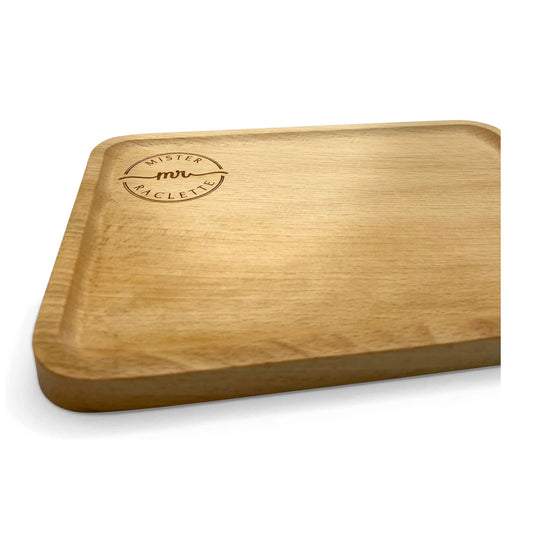Why the term "religious" for raclette cheese and cheese crusts?
Raclette and the mystery of "religieuses
Raclette is an iconic dish, as is Swiss cheese crust, especially when served with melted Swiss cheese, commonly known as "religieuse". Yet many people wonder about the origin of this name. What's more, the word "religieuse" also evokes a pastry in France. So where does the term come from?
A first idea: a link with the clergy
It seems that the term "religieuses" is only common in French-speaking Switzerland and Savoy. Jacques Montandon, famous for his TSR cooking shows, has an interesting story to tell. According to him, when nuns visited their families at the beginning of the 20th century, they collected kitchen leftovers, especially cheese crusts. By incorporating these crusts into their gratins, they made them tastier. In this way, what was once reserved for nuns became a prized delicacy.
A gift from the monks?
Another theory echoes the story of raclette and the nun. It suggests that monks used to taste the cheese and offer the crust, called "religieuse", to the faithful. For the faithful, it was a real delicacy.
Raclette and nuns at the château
Another story comes from the Château de Valère in Sion, Valais, Switzerland. Long ago, the castle's nuns, despite their limited means, had a weakness for cheese. They would secretly hide the crusts and discreetly toast them in their rooms by candlelight. The pleasure was then at its height.
The simplicity of delectation
Finally, some would say that this crust is called "religious" because its taste is simply divine. Accompanied by a raclette cheese, it's a delight for lovers of crispy, grilled flavors.
The growing popularity of the "religieuse
Today, the "religieuse" transcends borders and is gaining in popularity. Associated with raclette, it symbolizes culinary pleasure and deep-rooted traditions.
Another interpretation: "religieuse" and devotion
It's also possible that the term "religieuse" evokes devotion and simplicity, values often associated with monastic life. Cheese, a simple but delicious food, is a good example of this. Monks and nuns led austere lives, but found in cheese a humble but richly flavored comfort.
Modern raclette and the "nun
Today, modern raclette is no longer just a regional dish, but a veritable culinary phenomenon. Raclette "religieuses" have become an integral part of this experience. As the cheese melts and begins to brown, the resulting crust is particularly prized. This process is eagerly awaited by raclette lovers.
A crunchy, golden delight
The "religieuse" adds a unique texture and intense flavor to the meal. This crispy, golden morsel contrasts perfectly with the melting texture of the cheese. Each bite is a combination of sweet and crunchy, a real treat for the taste buds.
Why are "religieuses" so popular?
The "religieuse" is more than just a piece of crust. It's a symbol of sharing and conviviality. During a raclette evening, guests often fight over the golden crust, proof of its universal appeal. The "religieuse" is also a sign that the cheese has been perfectly melted and gratinated, a guarantee of quality and expertise.
A perpetuated recipe and tradition
The tradition of eating "religieuse" is not lost over time. On the contrary, it's passed down from generation to generation. Children quickly learn to appreciate this little extra, this piece that crowns the meal.
The "religieuse" in other dishes
The concept of the "religieuse" is not limited to raclette. This appreciation of the golden crust can be found in other dishes based on cheese and other ingredients. The crispy part is often the most coveted, bringing incomparable texture and flavor. And in terms of preparation, it's relatively easy for beginners.
New recipes to discover the "religieuse
New recipes often include a variety of ingredients and innovative preparations. Whether it's a thin-crust pizza or barbecued eggplant, the cheese crust has its place. Speaking of seasonal recipes, apple salad with stuffed zucchini and herbs can also incorporate pieces of cheese crust, adding a crunchy touch.Basic cheese crust recipe
Ingredients for recipe serves 4
To prepare a delicious Gruyère cheese crust, you'll need the following ingredients:
200g grated Gruyère or raclette cheese
4 slices farmhouse bread
2 cloves garlic
100ml dry white wine
100ml crème fraîche
1 tablespoon Dijon mustard
1 teaspoon paprika
salt and pepper to taste
1 bunch herbs (parsley, chives, thyme)
Preparation
-
Prepare the ingredients: Start by grating the Gruyère and peeling the garlic cloves. Finely chop the herbs.
-
Rub the bread: Rub the garlic cloves into the slices of farmhouse bread to impregnate them with flavor.
-
Mix cheese: In a bowl, combine grated Gruyère, crème fraîche, Dijon mustard, white wine and paprika. Season to taste with salt and pepper.
-
Applying the mixture: Spread the cheese mixture generously over the slices of farmhouse bread.
-
Baking: Place prepared bread slices on a baking tray and place under the broiler. Bake until the cheese is melted and lightly browned, about 5 to 7 minutes.
-
Add the herbs: Once the bread slices have been removed from the oven, sprinkle them immediately with the chopped herbs.
-
Why not finish the dish with a homemade ice-cream to add freshness and creaminess?









